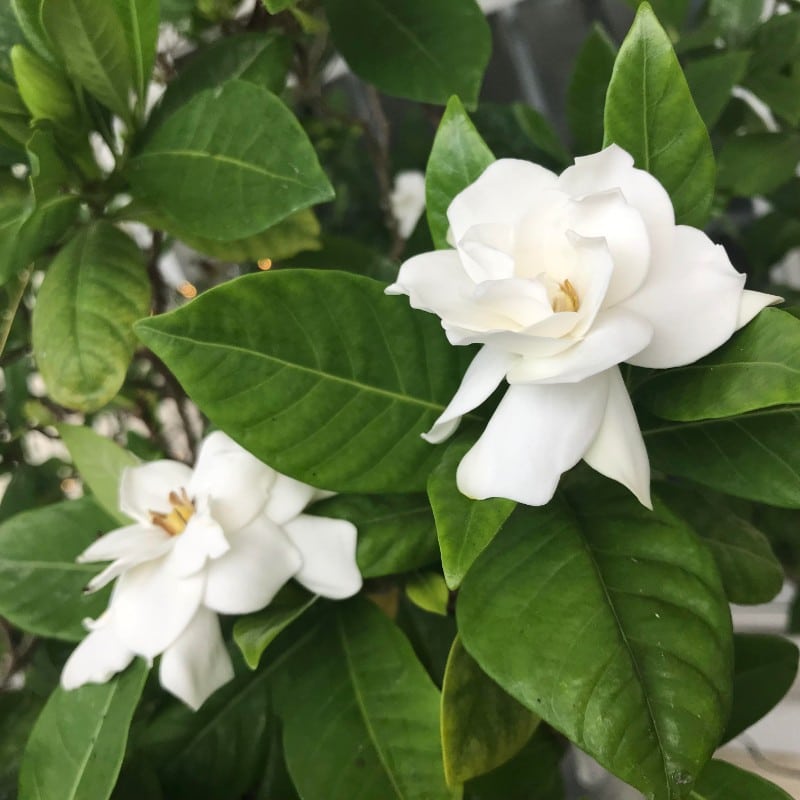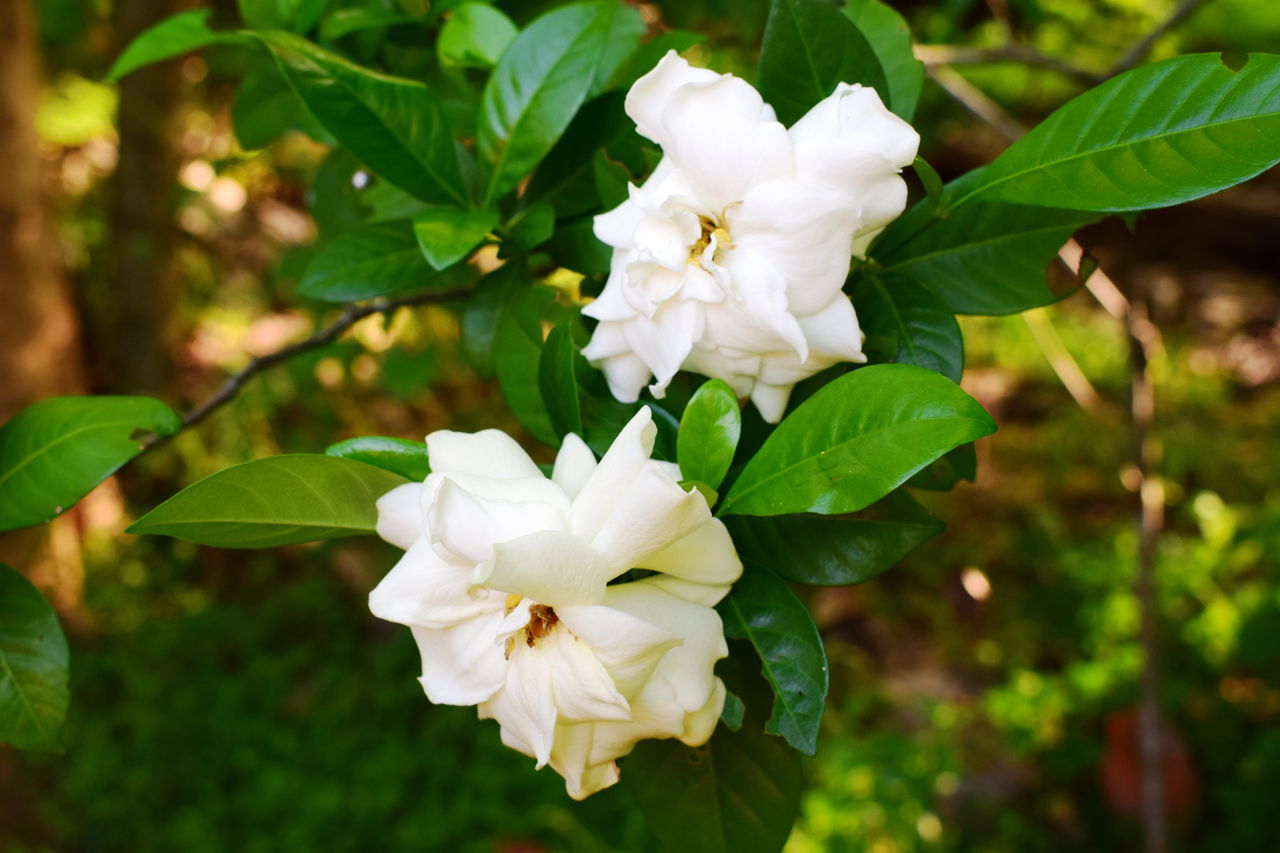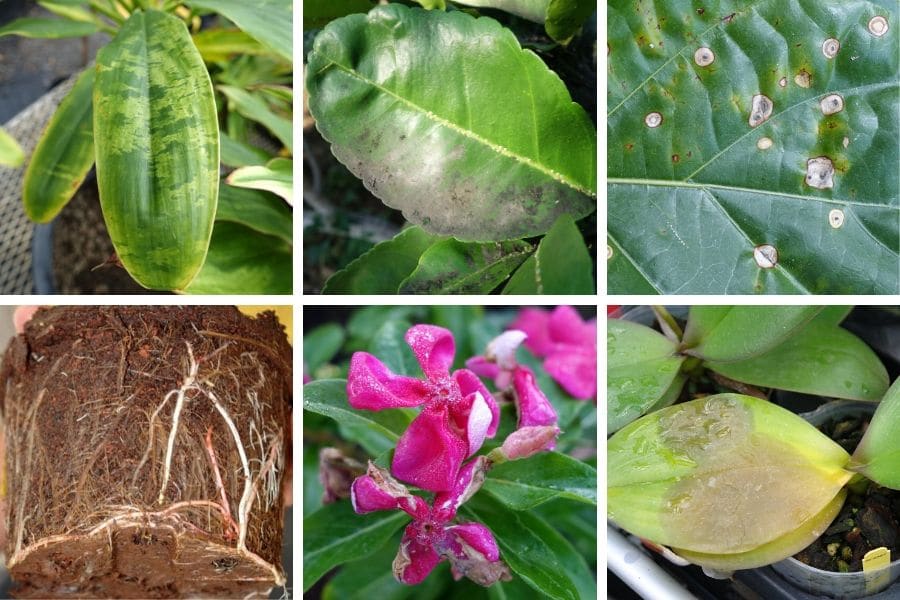Choosing the Perfect Gardenia Variety for Your Climate
With over 200 species of gardenias, selecting the right variety is crucial for success. Gardenias can be broadly classified into three categories: evergreen, deciduous, and flowering. Evergreen gardenias, such as ‘Radicans’ and ‘August Beauty’, retain their leaves year-round and are ideal for hedges or topiaries. Deciduous gardenias, like ‘Kleim’s Hardy’ and ‘Frostproof’, shed their leaves in the fall and are suitable for cooler climates. Flowering gardenias, including ‘Veitchii’ and ‘Jasmine’, are prized for their fragrant, showy blooms and thrive in warm, humid environments.
When deciding which gardenia variety to plant, consider your region’s hardiness zone, temperature, and humidity levels. For instance, if you live in a cooler climate, look for varieties that are tolerant of frost and cold temperatures. In warmer climates, choose varieties that can handle high temperatures and humidity. By selecting a gardenia variety that is well-suited to your climate, you’ll be well on your way to growing a thriving, beautiful gardenia.
Preparing the Soil for Optimal Gardenia Growth
Before planting gardenias, it’s essential to prepare the soil to meet their specific needs. Gardenias thrive in well-draining, acidic soil with a pH between 5.5 and 6.5. Soil with poor drainage can lead to root rot, while alkaline soil can cause nutrient deficiencies. To test your soil pH, use a soil testing kit or send a sample to a laboratory for analysis.
If your soil pH is too high, you can amend it with elemental sulfur or aluminum sulfate. For example, to lower the pH of a 10-square-foot area by one point, mix 1.2 pounds of elemental sulfur into the soil. If your soil lacks organic matter, add compost or well-rotted manure to improve its structure and fertility. A 2-inch layer of organic matter can help retain moisture, suppress weeds, and regulate soil temperature.
When selecting a potting mix for container-grown gardenias, choose a blend that is specifically designed for acid-loving plants. Avoid using regular potting soil, as it may contain lime or other alkaline ingredients that can harm your gardenias. Instead, opt for a mix that contains peat moss, perlite, or vermiculite to ensure good drainage and aeration.
How to Plant Gardenias: A Step-by-Step Guide
Planting gardenias requires careful attention to detail to ensure a strong, healthy start. When learning how to plant gardenias, it’s essential to handle the roots with care, plant at the right depth, and water properly. Here’s a step-by-step guide to help you get started:
Step 1: Prepare the Soil – Before planting, make sure the soil is well-draining and acidic, with a pH between 5.5 and 6.5. If necessary, amend the soil with elemental sulfur or aluminum sulfate to achieve the desired pH.
Step 2: Handle the Roots with Care – Gently remove the gardenia from its container, taking care not to disturb the roots. If the roots are wrapped in burlap, remove the burlap and any string or wire that may be constricting the roots.
Step 3: Plant at the Right Depth – Plant the gardenia at the same depth as it was previously growing, making sure the root flare (where the trunk flares out at the base of the plant) is level with the soil surface. If the root flare is not visible, plant the gardenia so that the top of the root ball is about 1-2 inches above the soil surface.
Step 4: Water Properly – Water the gardenia thoroughly after planting, making sure the soil is moist but not waterlogged. Water at the soil level, avoiding the leaves to prevent fungal diseases.
By following these steps, you’ll be well on your way to growing a thriving, beautiful gardenia. Remember to provide your gardenia with the right conditions, including adequate sunlight, water, and humidity, to ensure optimal growth and blooming.
Providing the Right Conditions for Gardenia Success
Gardenias are notoriously finicky plants, requiring specific conditions to thrive. To ensure optimal growth and blooming, it’s essential to provide your gardenia with the right amount of sunlight, water, and humidity. By creating a gardenia-friendly microclimate, you can encourage healthy growth and abundant blooms.
Sunlight: Gardenias prefer bright, indirect sunlight, especially during the winter months. Direct sunlight can cause leaf scorch and reduce blooming, so it’s best to provide filtered or dappled sunlight. East- or west-facing windows are ideal, while south-facing windows should be shaded with a sheer curtain.
Water: Gardenias need consistent moisture, especially during the growing season. Water your gardenia when the top 1-2 inches of soil feel dry to the touch, avoiding overwatering, which can lead to root rot. Reduce watering during the winter months when the plant is dormant.
Humidity: Gardenias thrive in humid environments, typically between 50-70% relative humidity. To maintain the right humidity, you can place the pot on a tray filled with water and pebbles or use a humidifier nearby. Grouping plants together can also help create a microclimate with higher humidity.
Temperature: Gardenias prefer daytime temperatures between 65-75°F (18-24°C) and nighttime temperatures around 55-65°F (13-18°C). Avoid placing your gardenia near heating or cooling vents, fireplaces, or drafty windows.
By providing your gardenia with the right conditions, you can encourage healthy growth, abundant blooms, and a thriving plant. Remember to monitor your plant’s response to its environment and adjust as needed to ensure optimal success.
Fertilizing and Pruning Gardenias for Maximum Blooms
Fertilizing and pruning are essential components of gardenia care, as they promote healthy growth and encourage abundant blooms. By understanding how to fertilize and prune your gardenia effectively, you can enjoy a thriving, flowering plant.
Fertilization: Gardenias are heavy feeders and require regular fertilization to maintain their health and promote blooming. Use an acidic fertilizer (pH 5.5-6.5) that is specifically formulated for gardenias or flowering plants. Apply the fertilizer according to the manufacturer’s instructions, typically every 2-4 weeks during the growing season (spring-fall). Avoid overfertilizing, as this can damage the roots and reduce blooming.
Pruning: Pruning is crucial for maintaining the shape and size of your gardenia, as well as promoting healthy growth and blooming. Prune your gardenia immediately after it finishes blooming, removing any dead or damaged flowers and branches. Cut back the stems to about 1-2 inches from the base, making a clean cut just above a leaf node. This will encourage new growth and promote blooming.
Timing is critical when pruning gardenias. Prune too early, and you may remove the buds that will produce flowers. Prune too late, and you may reduce the plant’s ability to produce new growth. Prune your gardenia when the flowers have faded, but before new growth begins.
Additional Tips: To promote maximum blooms, make sure to provide your gardenia with the right conditions, including bright, indirect sunlight, consistent moisture, and high humidity. Avoid overwatering, which can reduce blooming, and keep the soil slightly acidic to promote healthy root growth.
Common Gardenia Pests and Diseases: Identification and Control
Gardenias are susceptible to various pests and diseases that can compromise their health and beauty. Identifying and controlling these issues promptly is crucial to preventing the spread of disease and maintaining a thriving plant.
Pests: Common gardenia pests include whiteflies, mealybugs, spider mites, and aphids. These pests can cause damage to the leaves, stems, and flowers, leading to yellowing, distortion, and reduced blooming. To control pests, inspect your gardenia regularly, and treat infestations promptly with insecticidal soap or neem oil.
Diseases: Root rot, leaf spot, and powdery mildew are common diseases that affect gardenias. Root rot is caused by overwatering, while leaf spot and powdery mildew are fungal diseases that thrive in humid environments. To prevent diseases, ensure good air circulation, avoid overwatering, and remove infected leaves or stems promptly. Treat fungal diseases with fungicides, and consider repotting the plant in fresh, well-draining soil.
Prevention: Preventing pests and diseases is key to maintaining a healthy gardenia. Ensure good air circulation, provide adequate light and water, and maintain a balanced fertilizer regimen. Inspect your plant regularly, and take prompt action if you notice any signs of pests or disease.
Organic Control Methods: For gardeners who prefer organic methods, consider using neem oil, insecticidal soap, or horticultural oil to control pests. For fungal diseases, try using copper-based fungicides or bicarbonate-based products. Always follow the product instructions and take necessary precautions to avoid harming your plant.
By being aware of the common pests and diseases that affect gardenias, you can take proactive steps to prevent and control these issues, ensuring a healthy and thriving plant.
Tips for Container-Grown Gardenias: A Guide to Success
Growing gardenias in containers can be a great way to add beauty and fragrance to small spaces, such as balconies, patios, or indoor rooms. However, container-grown gardenias require special care to thrive. Here are some tips to help you succeed:
Choosing the Right Pot: Select a container that is at least 6-8 inches deep and has good drainage holes. Gardenias prefer well-draining soil, so a pot with drainage holes will help prevent waterlogged soil.
Selecting the Right Soil: Use a high-quality potting mix that is specifically designed for acid-loving plants like gardenias. Avoid using regular potting soil, as it may not provide the right pH for gardenias.
Fertilizing Container-Grown Gardenias: Feed your container-grown gardenia with a balanced, water-soluble fertilizer (20-20-20) during the growing season (spring-fall). Dilute the fertilizer to half the recommended strength to avoid burning the roots.
Watering Container-Grown Gardenias: Water your container-grown gardenia when the top 1-2 inches of soil feel dry to the touch. Avoid overwatering, which can lead to root rot and other problems.
Providing the Right Conditions: Container-grown gardenias prefer bright, indirect sunlight and high humidity. If you’re growing your gardenia indoors, place it near a sunny window or use grow lights to provide the necessary light.
Pruning and Grooming: Prune your container-grown gardenia regularly to maintain its shape and promote healthy growth. Remove any dead or damaged leaves or stems, and trim back the plant to encourage bushy growth.
By following these tips, you can enjoy a thriving and beautiful container-grown gardenia. Remember to monitor your plant’s condition regularly and adjust your care routine as needed.
Overcoming Common Challenges When Growing Gardenias
Despite their beauty and fragrance, gardenias can be finicky plants to grow. However, with the right knowledge and troubleshooting techniques, you can overcome common challenges and enjoy a thriving gardenia plant.
Yellowing Leaves: One of the most common issues gardeners face when growing gardenias is yellowing leaves. This can be caused by overwatering, underwatering, or a lack of nutrients. To address yellowing leaves, check your soil moisture and adjust your watering schedule accordingly. Also, consider fertilizing your gardenia with a balanced fertilizer to provide essential nutrients.
Lack of Blooms: If your gardenia is not producing blooms, it may be due to a lack of light, inadequate fertilization, or insufficient humidity. To encourage blooming, provide your gardenia with bright, indirect light and maintain a humid environment. Fertilize your gardenia regularly with a balanced fertilizer, and consider adding a bloom-boosting fertilizer to promote flowering.
Pests: Gardenias are susceptible to pests like whiteflies, mealybugs, and spider mites. To prevent pest infestations, inspect your plant regularly and treat any infestations promptly. Use insecticidal soap or neem oil to control pests, and consider introducing natural predators like ladybugs or lacewings to your garden.
Root Rot: Root rot is a common issue in gardenias, especially if the soil is waterlogged or poorly draining. To prevent root rot, ensure your soil has good drainage and avoid overwatering. If you suspect root rot, repot your gardenia in fresh, well-draining soil and trim away any affected roots.
By being aware of these common challenges and taking proactive steps to address them, you can enjoy a healthy and thriving gardenia plant. Remember to monitor your plant’s condition regularly and adjust your care routine as needed.









